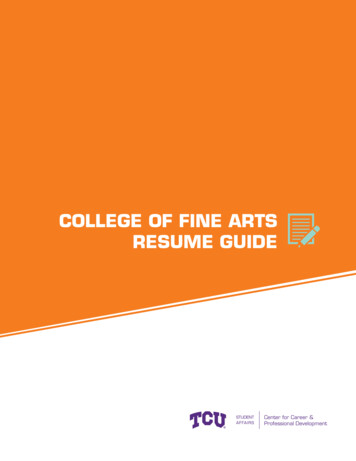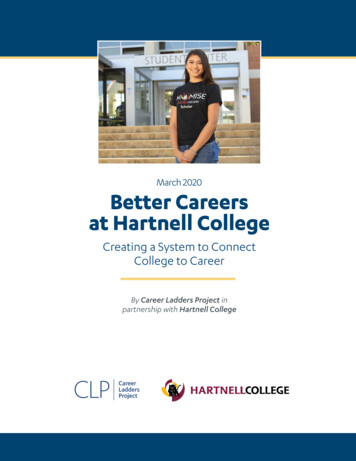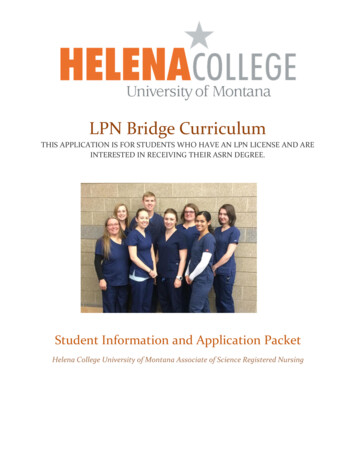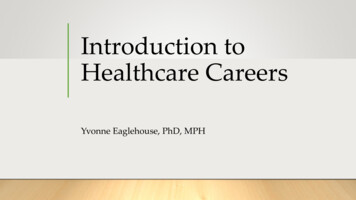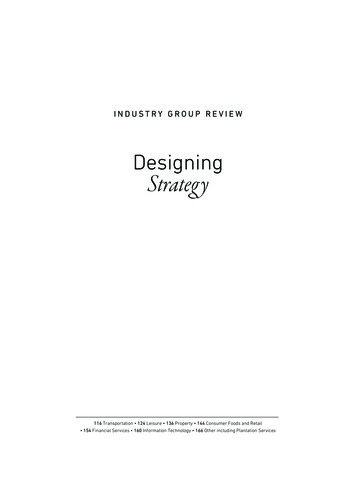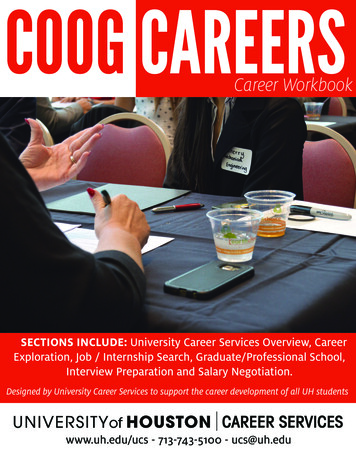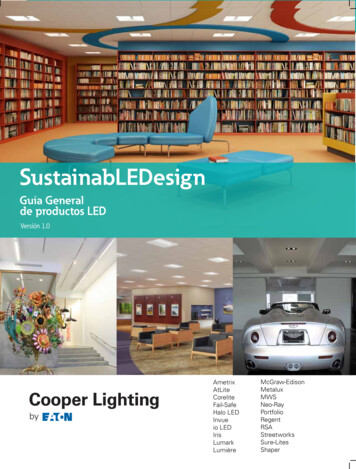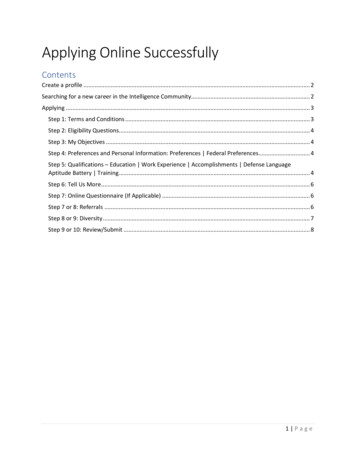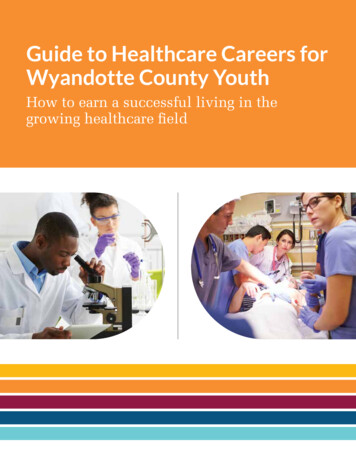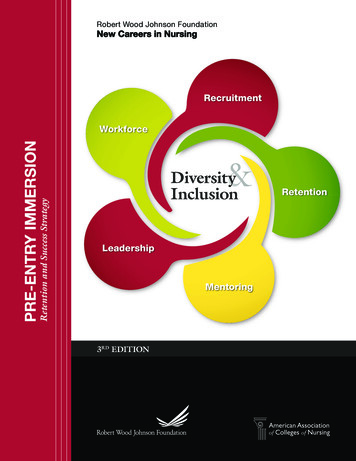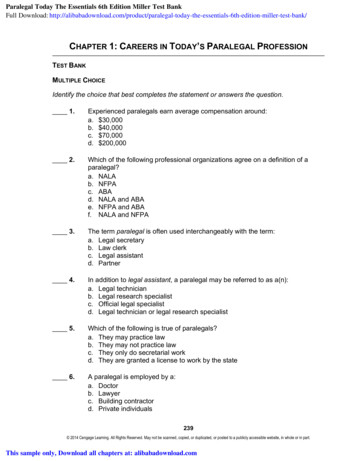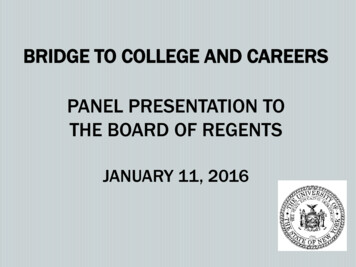
Transcription
BRIDGE TO COLLEGE AND CAREERSPANEL PRESENTATION TOTHE BOARD OF REGENTSJANUARY 11, 2016
PANELISTSSuri Duitch, PhD, CUNY University Dean for Continuing Education and WorkforceDevelopment and Deputy to the Senior University Dean for Academic Affairs.John Hunt, Executive Director for Adult Community Learning in the Division of Adult andContinuing Education at LaGuardia Community College (CUNY).Johnny Lozada, a former student in LaGuardia’s Bridge to College and Careers Program.Susan Diemert, Literacy Specialist for Orleans Niagara BOCES Continuing EducationDepartment where she oversees all adult education and integrated workforcedevelopment programming.
Bridge Programs:Supporting key transitions for adult studentsTestimony to the New York State Board of RegentsSuri Duitch, University Dean for Continuing EducationWorkforce Development
CONCEPTUAL FRAMEWORKConceptually Within the context of “career pathways”Part of a continuum of education and trainingMeeting individuals where they are atSupporting long-term career progression
COMPONENTS OF BRIDGE PROGRAMSOffering a “bridge” into further training, education or a job using two approaches –contextualized and integratedFundamentally, every bridge program must have:Support services and counselingA career and/or industry focusAn “active hand-off” to the destination
CUNY’S TECHNICAL SUPPORTStatewide professional developmentsupport to implement the TASC Master Teacher Institute – 73 teachers who willsupport peers across NYSLabor market-informed resource toolkits forclassrooms Overview curricula and eight sector-focusedcurricula Using data as a lens into the labor market
CONSIDERATIONS Central importance of a High School Equivalency (HSE) diploma forthose without a degree Need for rigorous evaluation Resource concerns in under-funded programs Offering counseling/case management Strong teacher/counselor collaborations
LaGuardia Community CollegeSupporting key transitions for adult studentsTestimony to the New York State Board of RegentsJohn Hunt, Executive Director for Adult Community Learningin the Division of Adult and Continuing Education
NY-BEST Integrated Basic Skillsand Technical TrainingSAVE EMTEmergency MedicalTechnicianNational CouncilLicensure Exam(NCLEX)- LPN forImmigrant NursesNCLEX-RN forImmigrant NursesCommunity HealthWorkerUS MedicalLicensing Exam forImmigrantPhysiciansMedical OfficeClinical TechnicianMedical OfficeClinical Technicianfor EnglishLanguage LearnersCentral ServiceTechnician
SEQUENTIAL VS. NY-BEST PATHWAYSBasic Skillsor ESOLCourseworkFulfill skillsrequirementsEnter trainingor collegeChallenges of Traditional Model: Length of time for basic skills/ ESOL development Low persistence or transition to next steps Gap between highest level of adult education and entrancerequirements “Chalk and talk” training program pedagogy and curriculaNY-BEST Solutions: Access for low level applicants via a robust intake model Simultaneous basic skills development and credential training Contextualized content and embedded advisement
Supporting Adults Through Vocational Education (S.A.V.E )EMT Student Success Increased access to career pathway for 30% of applicants withlower entrance scores, from 10th to 8th grade level Retention rates increased from 50% to 85% 85% job placement rate
NY-BEST NATIONAL COUNCIL LICENSUREEXAMINATION FOR RN/LPN COURSE OUTCOMESAverage 7 years in the US underemployed, not using nursing skills98% course retention rate in intensive modelLPN pass rate of 93%, double the national rate for immigrant professionals(46%), with 5.9 grade entrance scoresLPNs increased wages 120% from 12.02 to 26.45 after course.RNs increased wages 150% from 11.61 to 29.00 after course.
MDRC Evaluation ReportHSE Bridge ProjectRandom AssignmentEvaluation Outcomes80Percent706050Bridge Program40Prep Program3020100CompleteCoursePass GEDExamEnroll inCollegeRetained inPSE
NY-BEST ProgramAccess & Success ModelsProgramCommunityHealth WorkerSAVE EMTNYC WBCNCLEX PREPFor ELLsMedical OfficeClinicalTechnicianCentral ServiceTechnicianAdmissionsRequirement(TABE Reading)7.0 GEgradeequivalency8.0 GE5.9 GE (LPN)7.0 GE (RN)7.0 GE5.0 n/a(9 creditstowards ASdegree)99%93% (LPN)100%100%ObtainedEmployment37%81%70%50%85%
FOR FURTHER INFORMATIONHSE Bridge to College and Career Program Videohttps://youtu.be/y60nAqj1bgMMDRC HSE Bridge Evaluation Report health-and-business-program#overviewNY-BEST Integrated Basic Skills -college/NYC Welcome Back Centerfor immigrant ge and Careers Pathways Institutehttp://www.laguardia.edu/CCPI/
A Student’s PerspectiveLaGuardia Community CollegeJohnny Lozada, a former student inLaGuardia’s Bridge to College and Careers Program.
JOHNNY LOZADA:HSE BRIDGE STUDENT SUCCESS STORYEnrolled in LaGuardia’s HSE Bridge to College and Careers program in 2011, attendingclass in the evenings, part-time, while balancing a full-time job and raising a family.Passed his high school equivalency exam and transitioned into a LaGuardia Associate’sDegree program.Earned an Associate’s Degree at LaGuardia as an honors student, while serving as amentor and peer advisor for entering HSE graduates and first-generation freshman.Earned a Bachelor’s of Science in Applied Psychology at NYU in 2015.As an intern at Quest to Learn, through the NYU’s Applied Psychology program, created anafter-school program for at-risk urban teens
Orleans Niagara BOCESEffective Bridge ProgramsTestimony to the New York State Board of RegentsSusan Diemert, Literacy Specialist for Orleans NiagaraBOCES Continuing Education Department
Literacy Zones Provide ComprehensiveServices And Case Management to EnsureBridge Program Success “Literacy zones” serve under-educated disconnected youth and adults --andtheir families--in impoverished neighborhoods Intensive case management in family welcome centers connect studentswith comprehensive services to make bridge programs effective Wrap around support servicesLiteracy instruction for all public assistance recipientsHigh School Equivalency preparationComputer/digital literacyJob readiness trainingPre-collegiate and remedial studies to support college transition Case management key to success Literacy zone bridge outcomes: 297 obtained employment, 73 retainedemployment, 58 students entered postsecondary
LITERACY ZONE FLOW CHARTClientsfromDept. of LaborClientsfromDept. of Social ServicesWalk InsLinks to needed servicesprovided byLiteracy Zone Partnersthrough BOCES IntensiveCase *Meeting withIntensive CaseManagerClient AcceptsRefer to BOCES/DSSOrientationProcess ExplainedClient DeclinesFailure to participate in thisprocess can lead to denial of CashAssistance*Discusses test results/barriers to education/employment/linkages to needed servicesABE/HSE/ESOLPreparationClient is sent tothe following*Remediation*Job ReadinessTraining &Career Prep*If Client has HSE or High School Diploma and scored LOWER than a 9th grade on TABE*Clients who have a HSE or High Diploma and scores OVER 9th grade level on the TABEEmploymentTrainingProgramPre-CollegiatePost Secondary EducationAll students,including publicassistancerecipients andwalk-ins, areassessed andplaced in theappropriatepathway leadingto educationalgain andemployment.
BRIDGE PROGRAMS CO-ENROLL STUDENTS IN CAREER AND TECHNICAL EDUCATION(CTE) PROGRAMS AND CONTEXTUALIZED LITERACY INSTRUCTIONHealth Careers Bridge Programs1. Home Health Aides: Admission Requirement – 6.0 Reading level on TABE On-demand jobs list for Niagara County Certified to deliver personal care in home/assisted living facilities. At completion of course - Employment in facilities, visiting nurses, private homes. 100% placement.2. Certified Nursing Assistant: Admission Requirement – 9.0 Reading level on TABE On-demand jobs list for Niagara County. Help patients with healthcare needs under the supervision of a Registered Nurse or Licensed Practical Nurse At completion of course, immediate employment3. Licensed Practical Nurse: Admission Requirement – 11 Reading level on TABE Provides bedside care to patients in health care facilities At completion, immediate employment opportunities in hospitals, doctors offices, health education field. Last five graduating classes – 100% passing rate on the National Council Licensure Examination (NCLEX)state exam
BRIDGE PROGRAMS (CONTINUED)Culinary Bridge Program: Orleans-Niagara BOCES and YWCA of Niagara Frontier partnership. Students co-enroll for 10-week introductory culinary/literacy program. At completion, further training at Niagara County Community College (NCCC) Culinary Institute in NiagaraFalls. Immediate employment with the YWCA Catering Crew and local restaurants.Welding Bridge Program: On demand jobs list for Niagara County Co-enrolling students – Orleans-Niagara BOCES and NCCC Student completes two years of welding at BOCES then attends NCCC to complete the required liberal artscourses. This leads to an associates degree.Niagara County Jail Bridge Program: Landscaping/Conservation combines hands-on certificate program with contextualized instruction forinmates. Culinary certificate program combines hands-on introductory training with contextualized instruction. Next Steps: Orleans-Niagara BOCES support staff connects released inmates to Literacy Zone Centers tocontinue with their program.
FUNDING SOURCES LEVERAGED BY BRIDGE Supplemental Nutrition Assistance Program (SNAP) funding supports bridgeprograms for underemployed and undereducated food stamp recipients throughpartnership with NYS Office of Temporary and Disability Assistance (OTDA) SUNY Full Time Equivalent (FTE) aid supports pre-collegiate bridge instructionthrough partnerships with Niagara County and Erie Community College Pathwaysprograms. Vocational Rehabilitation (WIOA Title IV) funds supports bridge programs forindividuals with disabilities through partnerships with ACCES-VR. Incarcerated Youth funding supports bridge programming for students age 16-21 incounty jails NYSED Equivalent Aid from 13 component school districts supports HSEpreparation for youth age 16-21. Veteran’s Affairs funding supports bridge programs for veterans. Private Pay
FUTURE Key Considerations: Proposed Regents Bridge funding will build pilots in every region of the state using best-practices. Professional development and curriculum development tools are needed to design programs andsupport instructional and case management staff. Proposed Regents Bridge funding should include strategies and expectations for leveraging otherfunds. Case management helps students navigate complex systems and access comprehensiveservices. A range of credentials could be offered to adult students at all educational levels as they pursuecareer pathways. Strong evaluation and identification of outcome measures is important.
Culinary Bridge Program: Orleans-Niagara BOCES and YWCA of Niagara Frontier partnership. Students co-enroll for 10-week introductory culinary/literacy program. At completion, further training at Niagara County Community College (
